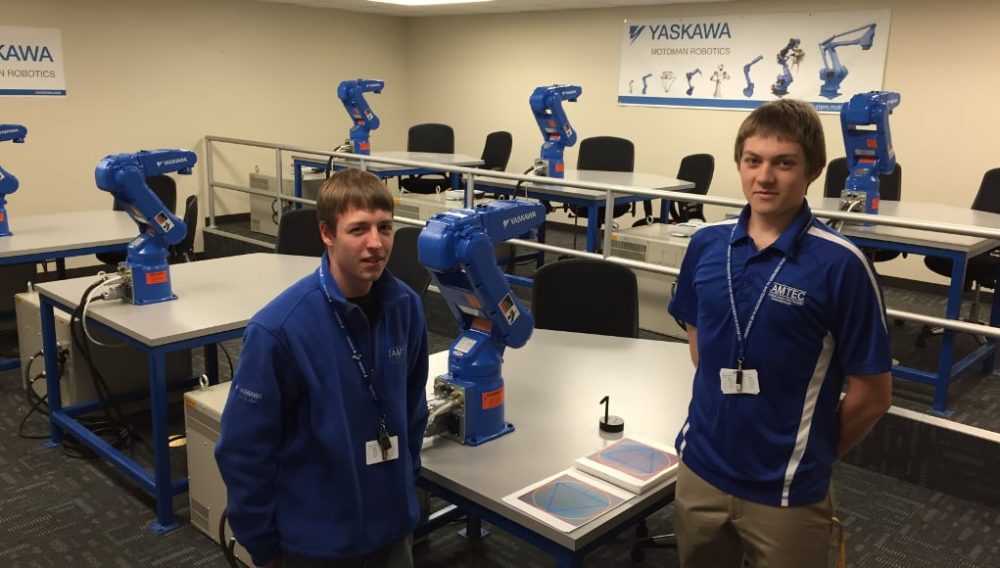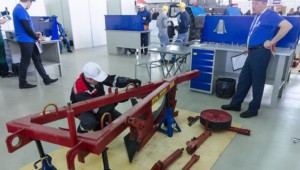What Do You Think About CTE?

By Mary Ryerse & Cat Wedgwood
What’s the first thing you think of when someone says “vocational” or “career-technical” or “trade” school? Here’s what we picture:
Cat: I always think of the low-quality commercials that came on in the 80s when I flipped on the television after school. I’d eat my fruit roll-up snack and watch people doing boring (to an elementary school aged girl) things like my dad did with our car or with our air conditioner, and then a 1-800 number appeared to call immediately so you could learn how to do this work, too. It most certainly never appealed to me, and I never even thought of it as an option for my future education.
Not Your Dad’s CTE
As referenced, career and technical education (CTE) has come a long way since those days. Today’s CTE is innovative. It’s cutting-edge, technologically exciting and prepares students of all ages for a wide range of high-wage, high-skill, high-demand careers that graduates can start quickly.
The Association for Career and Technical Education (ACTE) is the largest national education association focused on promoting the benefits of trade and technical schools across the country. Based on data drawn from the U.S. Department of Education’s High School Transcript Study, the ACTE states that the courses of study offered by technical schools encompass 94% of the interest areas of high school students.
As this ACTE-produced video asserts, today’s CTE is cool:
CTE Career Breakdown
CTE programs educate students for a range of career options through 16 Career Clusters and more than 79 specific articulated pathways. Integrating academics and application prepares students to be college- and career-ready by providing core academic skills, employability skills and technical, job-specific skills.
As shown in the infographic below (also available on the ACTE website), the CTE programs that stem from the 16 Career Clusters include preparation for careers in the health sciences, information technology, construction, finance, hospitality & tourism and many more:
We hear so much about the need for students to prepare for STEM careers, and as you can see in the infographic many of these careers fall in the STEM category. Approximately 36% of STEM jobs require postsecondary credentials that CTE students can obtain within two years of high school graduation, giving them an advantage over those attending a traditional four-year college.
Workforce-Ready Mindsets and Skills
Because students who choose a CTE track often do so out of their own interests and passions, they also develop the types of student agency skills employers desire the most in employees along the way, such as problem-solving, project completion, communication, research, time management and critical thinking skills.
Student mindsets about entering the work world are critical. We recently released a report on personalizing college, career and life readiness with College Spark Washington that discusses the importance of equipping students to better understand their options and pave their learning pathways.
Further, there isn’t really a better learning experience than on-the-job training to develop employability skills. We recently featured GPS Education Partners and their innovative apprenticeship partnerships in a Next Generation Career Pathways case study.
For more on employability skills, refer to the Employability Skills Framework, which was developed as part of the Support for States Employability Standards in CTE and Adult Education project, an initiative of the Office of Career, Technical, and Adult Education at the United States Department of Education.
 CTE Students Excel
CTE Students Excel
Not only does CTE help prepare students for future careers, it also helps keep them in high school. According to ACTE, high school students involved in CTE are more engaged, perform better and graduate at higher rates:
- 81% of dropouts say relevant, real-world learning opportunities would have kept them in high school.
- The average high school graduation rate for students concentrating in CTE programs is 93%, compared to an average national freshman graduation rate of 80%.
- More than 75% of secondary CTE concentrators pursued post-secondary education shortly after high school.
Conclusion
It is no wonder CTE students excel. Many of the things so prevalent in what is being talked about today in education have long been part of CTE. For example, CTE’s mastery progressions of skills and competencies model competency-based education; CTE’s hands-on approach has long reflected project-based learning; further, the work experience students gain in fields such as hospitality provide for the development of social emotional learning (SEL) competencies.
We would love to hear more about what you think about CTE and invite you to share any high-quality examples of connecting to today’s workforce and initiatives in the comments below.
For more, see:
- Smart List: 25 CTE Innovations and Innovators
- Enhancing a CTE Program to Boost Student Readiness
- Getting Smart Podcast | How Applied Learning is Accelerating Students to Technical Careers
Stay in-the-know with all things EdTech and innovations in learning by signing up to receive the weekly Smart Update. This post includes mentions of a Getting Smart partner. For a full list of partners, affiliate organizations and all other disclosures please see our Partner page.







0 Comments
Leave a Comment
Your email address will not be published. All fields are required.